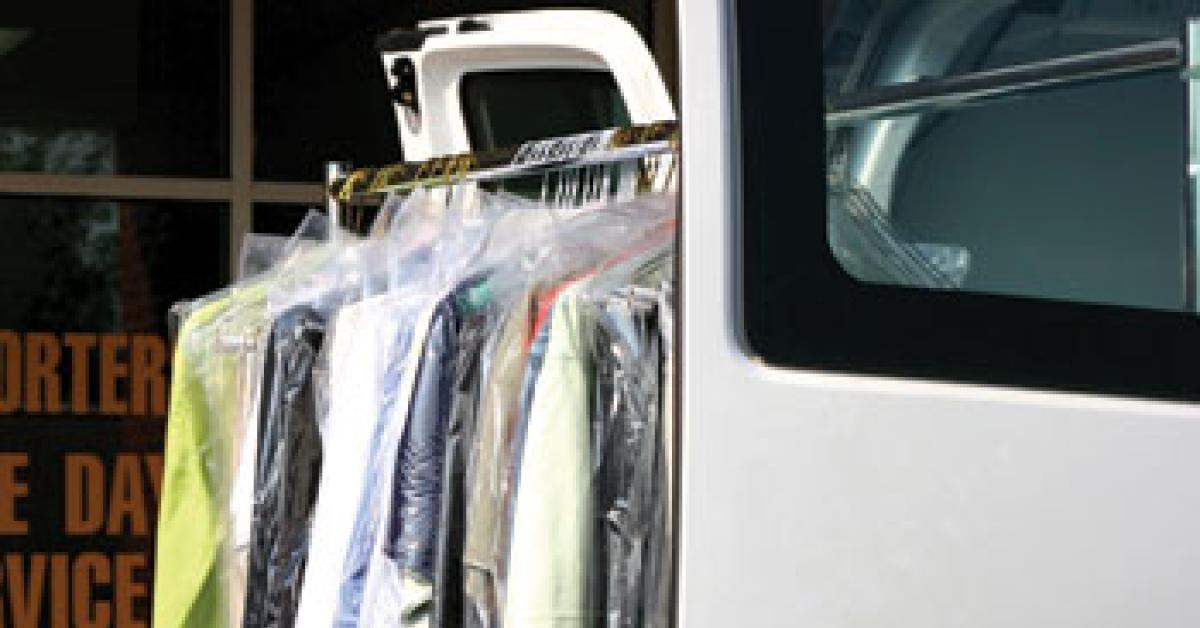CHICAGO — The decline of Blockbuster’s DVD rental business that led to bankruptcy and the closure of hundreds of its brick-and-mortar stores across the country last year is a wake-up call for drycleaners, warns “The Route Pro” James Peuster.
Why? Because drycleaning and Blockbuster have something in common: it’s necessary to make two trips for service.
“You rent a movie, you go home, you return it next time,” he says. “You drop off clothes, go home, you pick them back up. Very few retail situations require two trips for service. This is why routes are now essential.”
But the drycleaner who is considering starting route service better be serious about it, Peuster says, because not being fully invested in the effort can create more headaches than they’re worth.
For 10 years, Peuster has been an “on- and off-site coach, specifically for routes.” The goal of his consulting business is “to make sure people do routes right, or not at all.”
GETTING STARTED
For the drycleaner who is just starting a route or is considering one, it’s important to recognize that route building is not the same as opening a store, Peuster says.
“Be willing to build around your store. If you try to be in a completely new area, it might take a little bit longer. Be willing to recognize you’re going to have to invest more in marketing.”
Peuster says the financial goal should be for a route to generate $1,800 in gross sales a week, which he calls the “break-even” from an operational standpoint.
“Each customer that’s on a route, on average, is worth 10 bucks a week in gross sales,” he says. “In order to get to $1,800 a week, you need 180 customers. … If you add 18 customers a week to your route in 10 weeks, then you could have a break-even route.”
Developing a route service requires the acquisition or use of a delivery vehicle such as a van, the hiring or selection of an employee to drive the appointed route, the acquisition or use of some type of computerized route management system, and the hiring or selection of an employee to head up the marketing efforts that should go along with it.
“It’s money. It’s time. It’s patience, recognizing this isn’t going to happen overnight.”
And don’t plan to charge extra for route service, says Peuster, or you’ll be no better off than you were before.
“The bottom line is you’ve got to do it at the same price as the stores. You’ve got to do it for free. You can’t charge more for routes. It’s like opening up a drop store. You wouldn’t charge customers more to go to that drop store because it’s not making a profit yet.”
GETTING THE WORD OUT
Marketing your routes is as important as the nuts and bolts of your delivery service, Peuster says. “We strongly go with the face to face (approach). Drycleaning is such a personal service. If you do direct mail or bag drop, it becomes a lack of a personal touch.
“You can plant seeds with direct mail and door hangers. You definitely have to have a website with a sign-up sheet. You have to look like you’re in the 21st century. But you can’t just rely on one (method).”
He suggests that a first step should be trying to convert your current counter customers.
At a time when hard-working professionals and run-ragged parents might be willing to forgo using a drycleaning service because of the cost or the time involved in dropping off and picking up their clothes, communicating the convenience of a route service might be enough to get to keep their business.
“People are working longer and harder than ever before to keep their jobs,” Peuster says. “They’re dressing up more, so there’s good news in that. … Kids are involved in activities more than ever. With the advent of iPhones and Internet, they’re cluttered with more and more stuff on their mind, so picking up drycleaning becomes a back-burner item.”
Since route customers only have to drop a bag full of clothes on their porch or other predetermined spot at home and retrieve the cleaned garments from the same spot another day eliminates the excuse of not having enough time.
“Drycleaning is such a luxury item for many that they start thinking, ‘We don’t need to do drycleaning anymore, we’ll cut back.’ But if you have the routes, it adds a convenience factor, makes it more luxurious for them to use.”
It’s estimated that consumers spend between 17% and 25% more on a drycleaning route than they would if utilizing a store, Peuster says. They’re less likely to use a competitor’s coupon, or even go to another drycleaner on a whim, he adds.
Tomorrow: Getting better...
Have a question or comment? E-mail our editor Dave Davis at [email protected].

